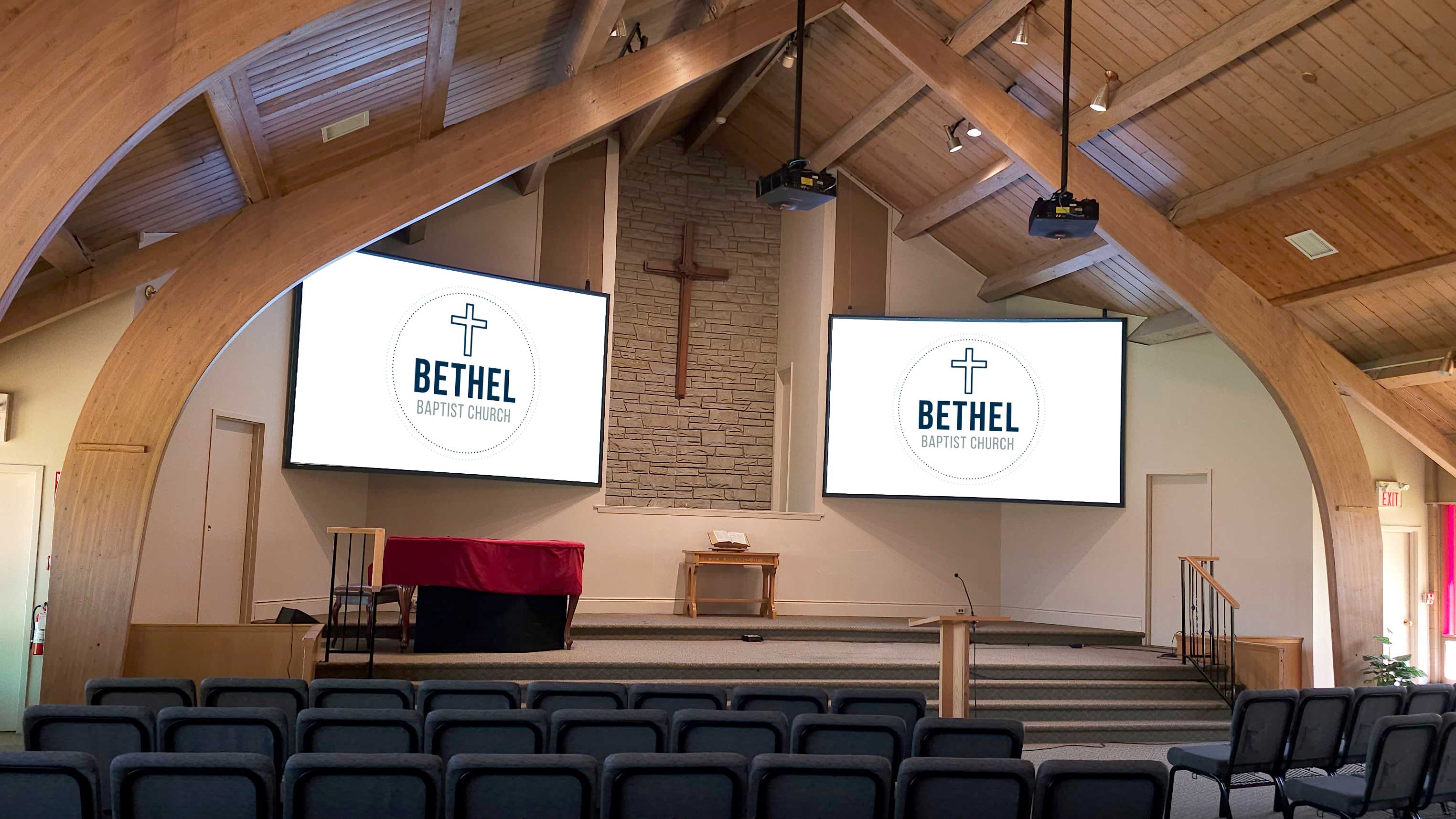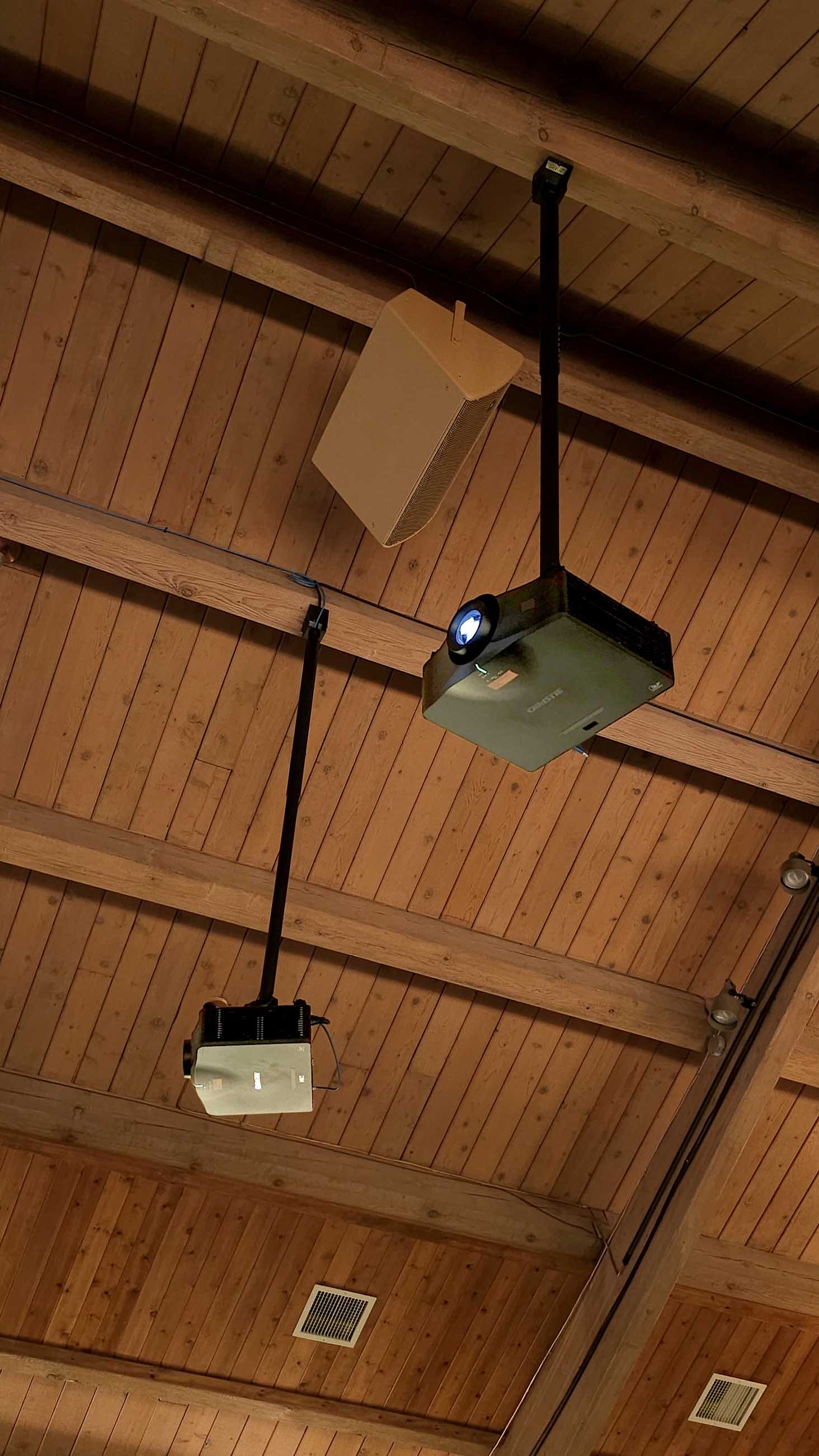
Carl Lukings is the proprietor of Horizon Solutions, an AV integrator/installer based in London, Ontario. Over his 40 years in business, Lukings has installed a lot of projectors in houses of worship. Based on his vast experience in this area, Lukings and his system designers at Horizon know why video projection remains so appealing to houses of worship, be they big or small, modern or traditional.
[The Integration Guide to House of Worship]
“Churches today use video projection for a wide variety of applications in their sanctuary spaces and during their worship services,” he explained. “Projecting song lyrics, hymns, scripture readings, and other liturgical text is common, but projection is also being used for announcements, sermon illustrations, and teaching notes, as well as video content—everything from content that is specifically produced for the church market as well as anecdotal videos from YouTube and other sources. We’ve installed hundreds of projectors. Over 25 of them have been Christie Inspire Series 1-DLP laser projectors.”
“AV technology plays an essential role in engaging and captivating a congregation,” agreed Joe Mercier, Christie’s senior sales manager. “We live in a visual world, and projected images help communicate messages and keep congregations engaged.”
Importance of Affordability
When asked why houses of worship choose video projectors over video walls and other display options, Lukings responded with a one-word answer: cost.
“Churches are using video projectors in their worship and teaching spaces because of the low cost of these systems compared to the alternatives,” he explained. “If money were no object, many would love to install video walls or direct-view LED displays because of the inherent advantages of those technologies, including ultra-bright images and the ability to have people, objects, and sometimes set pieces close to the display — something that’s not as easy to achieve with video projection. The problem is that these alternatives to video projectors are cost prohibitive for congregations funded through offerings.”
Just how affordable are video projectors compared to video walls and dvLEDs? Lukings said it depends somewhat on the specifications and the requirements, but it's "usually a fraction of the cost. Often a quarter of the price or sometimes less.”
“LED video walls are a great solution for places of worship that have the space and budget, and want to engage a larger congregation,” Mercier agreed. “However, projection is a much more affordable and versatile option.”
But don’t let the lower price fool you: Today’s laser projectors deliver clear, crisp, and bright images in small packages. So, although projectors may not be everyone’s top choice, they are a highly acceptable, high-performance option for even the smallest of congregations.
Projectors can also be mounted in a less intrusive way, such as on a ceiling or another high point within the church. When coupled with a motorized screen that can be retracted when not in use, a projector can be a model of technological discretion. In those instances where video is being projected onto a church wall, the process is even simpler.
“For a funeral, wedding, or other church event where the video image may not be required or seen as being appropriate in the space, retracting the screen solves the problem of visibility,” said Lukings. “That's not possible with a video wall or a direct-view LED display.”
Lumens, Lumens, Lumens

When it comes to most-desired features, most churches start with resolution. "Questions about 4K and higher resolutions come up regularly,” Lukings observed. “But at the end of the day, the resolution is much less important than how bright the projector is—given the distance and the size of images that are being produced in church applications, any modern resolution will do if the image is bright enough.”
“Price and brightness are major considerations for this market,” added Mercier. “A projector needs to deliver a great lumen-to-price ratio.”
Delivering the right ratio can be a challenge in churches outfitted with multiple windows that allow sunlight to pour in. “A quality projector coupled with a screen designed for higher ambient light conditions can make all the difference in creating an impactful image,” Mercier explained. “In some situations, other controls may be needed, like window shades, to manage sunlight. An experienced integrator who can visit the site can help guide the place of worship to a solution that is ideal for them.”
[Making the Case for Managed Services]
Houses of worship are also interested in longevity and equipment serviceability. In the past, using projectors that relied on lamps, filters, and other consumables—and required scheduled maintenance—made life difficult (and expensive) for congregations, particularly those who relied on volunteers to keep the church running. Modern laser projectors have considerably eased service demands for churches, keeping costs down and aging volunteers off ladders.
As for the type of projectors that are best suited for houses of worship? The choice depends on the church, Lukings noted. Horizon sells more projectors with a traditional “middle of the road" lens ratio, in part because they are the least expensive lenses, but the company also sells short-throw projectors when warranted.
"Christie’s Inspire DWU960ST-iS is a great solution for churches looking for a short-throw solution at a great price point,” he added. “If we are working on a rear-projection application, then certainly a short-throw projector is the right solution.”
Screen Suggestions
As for projection surfaces of choice? Again, product preferences are diverse because each application is different. “It's dependent on the venue,” said Mercier. “Some places of worship have ornate woodwork or millwork that they want to keep visible. Screens that retract enable these features to be seen when projection is not used.”
Horizon tends to install Draper screens, but also selects products from Da-Lite and Strong/MDI Screens from time to time. “We still see that the majority of churches are using motorized retractable screens,” Lukings said. “However, fixed screens are also found in a good portion of our church projects. There are also many churches that don't use traditional screen surfaces at all. Instead, they project onto a flat wall treated with a specific ‘projection screen’ paint.”
“We live in a visual world, and projected images help communicate messages and keep congregations engaged.”
Joe Mercier, Christie
One last point from Lukings: When choosing a video transport system for projectors, opt for a video-over-IP solution rather than broadcast-based SDI. “In a church application, where you never know what sort of content somebody is wanting to be able to project, having a video-over-IP system in place ensures HDCP compliance and the option to send 16:10 format images," he explained. "Also, this technology provides additional flexibility for video routing and expansion of the system in the future. Video-over-IP or HDBaseT solutions provides a great infrastructure for today’s needs and into the future.”
The fact that projectors rule in the houses of worship market—while projection screen preferences vary widely—says a lot about this particular client base. Although they want to provide professional-quality AV to their congregations, churches as clients generally lack the budget, expertise, and trained support staff to afford higher-end AV solutions.
[Strategies and Solutions for Corporate Campus Displays]
That said, “The key to have a successful video installation in a church is listening to the client's needs and gaining an understanding of what it is that they're hoping to achieve,” advised Lukings. “It's also important to understand that the investment in technology that these churches are making will need to evolve as they learn how to make the technology benefit their ministries. So don't be afraid to shoot a little bit higher than what the minimum would be to make the sale. Being good stewards with their finances is on every church leader’s mind. They will appreciate a good investment in the long term.”







